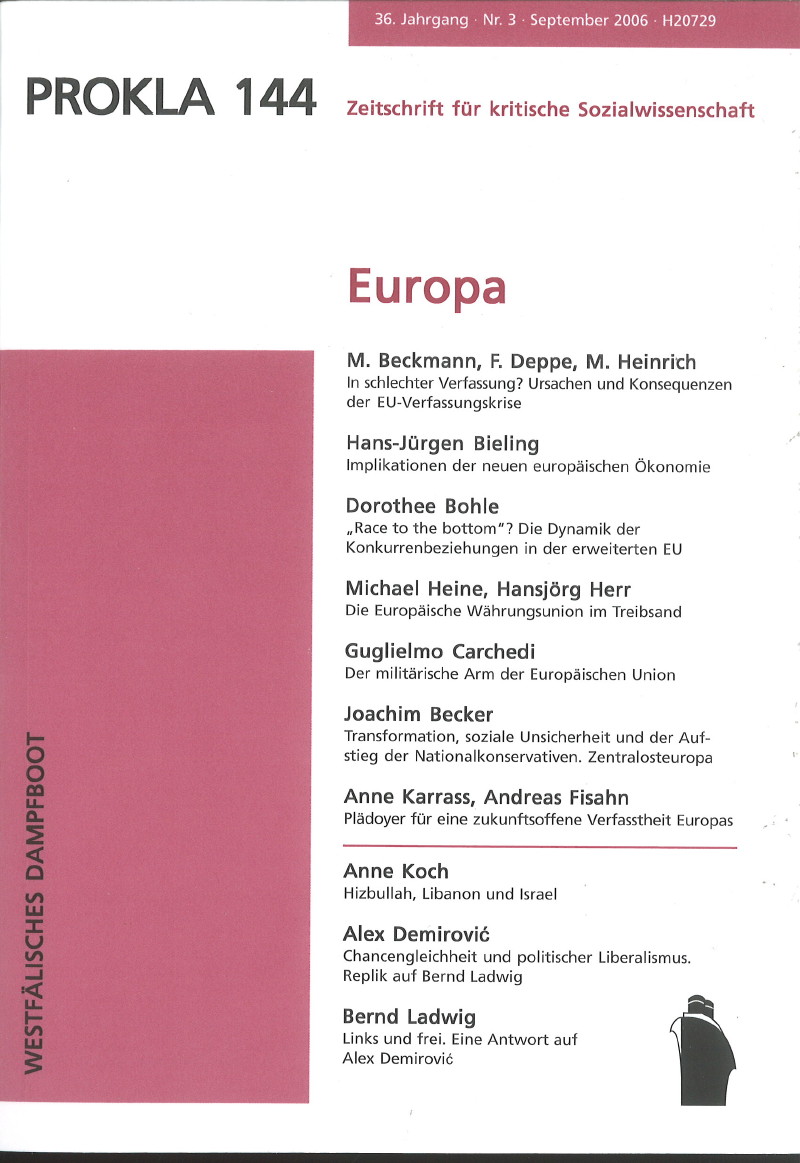„Race to the bottom”? Die Dynamik der Konkurrenzbeziehungen in der erweiterten Europäischen Union
DOI:
https://doi.org/10.32387/prokla.v36i144.545Keywords:
Europa, EU, Krise, Neoliberalismus, Ökonomie, OsteuropaAbstract
Over the last decades, competitiveness has become the major driving force of European integration. The EU polity has gained significant influence in reshaping domestic policies and institutions towards a more market oriented path. The supranational constraints on nation states are reinforced by an increasing locational competition. Eastern enlargement of the EU is often said to reinforce the locational competition, and to ultimately lead the EU into a downward spiral of social and economic standards. This article proposes a more nuanced view. It shows that in contrast to the race to the bottom argument, it is not the neoliberal Baltic States that exert the strongest competitive pressure within the EU, but rather the Visegrad countries, who, with their interventionistic states and their comparatively generous welfare states, are closer to the current form of European capitalism.






